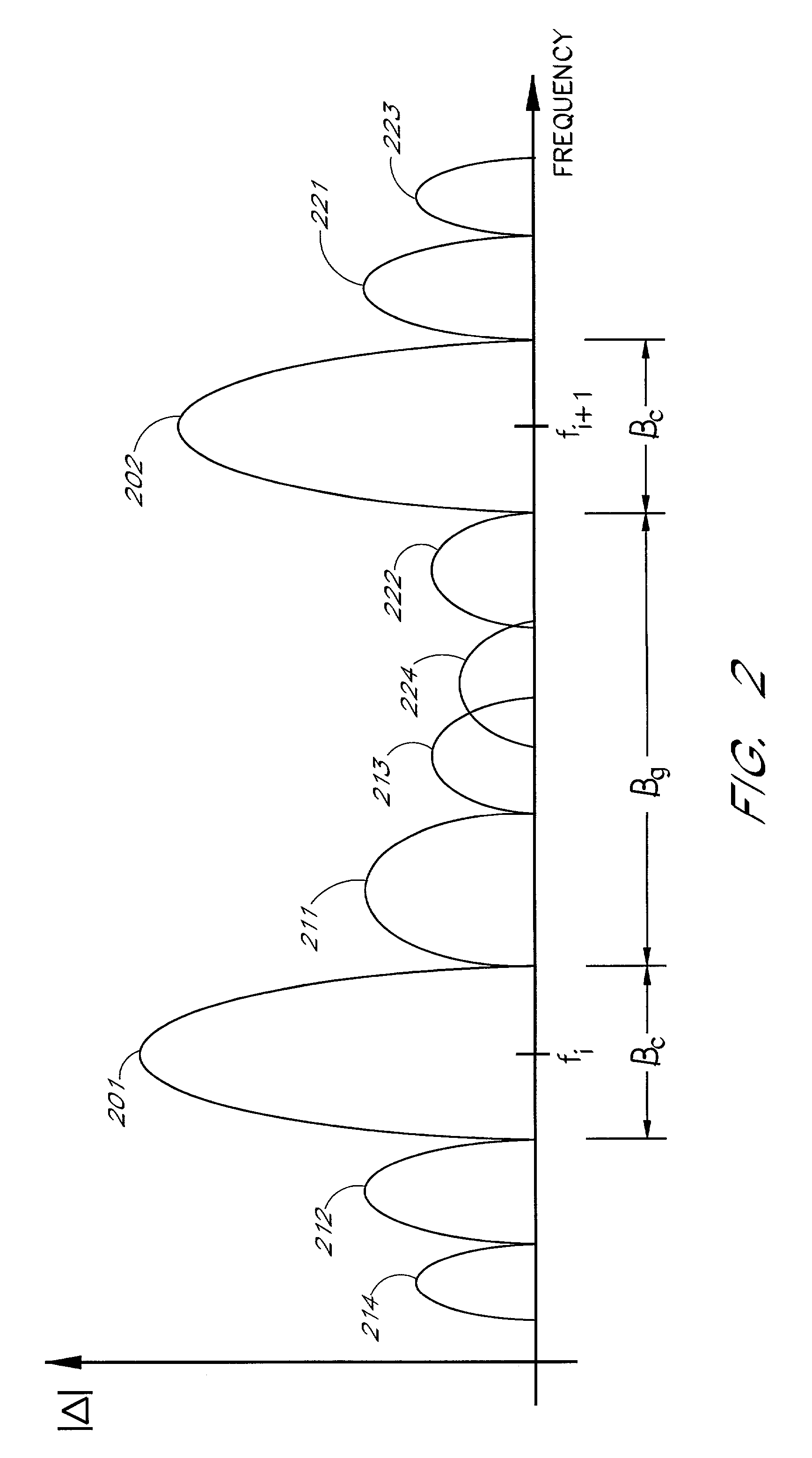Sliding-window transform with integrated windowing
- Summary
- Abstract
- Description
- Claims
- Application Information
AI Technical Summary
Benefits of technology
Problems solved by technology
Method used
Image
Examples
Embodiment Construction
[0073]For the sake of clarity in the following disclosure, a distinction is made between sub-carriers and sub-channels when dealing with sinusoidal basis functions. Generally, a sub-channel is a frequency bandwidth allocated for the transfer of the modulated signals. The carrier frequency is usually the carrier frequency of the sinusoidal signal used to modulate a baseband signal into the bandwidth of the sub-channel. The sub-carrier is the sinusoidal signal.
[0074]FIG. 1 is a block diagram showing a multi-channel medium 112 connecting a multi-channel transmitter 111 to a multi-channel receiver 113. The multi-channel medium 112 is configured to provide m separate data channels 101–103 shown as a first channel 101, a second channel 102, and an m-th channel 103. The multi-channel transmitter 111 provides a separate data output to each channel 101–103 and each of the multi-channels 101–103 is provided to a separate data input of the multi-channel receiver 113. In one embodiment, the mul...
PUM
 Login to View More
Login to View More Abstract
Description
Claims
Application Information
 Login to View More
Login to View More - R&D
- Intellectual Property
- Life Sciences
- Materials
- Tech Scout
- Unparalleled Data Quality
- Higher Quality Content
- 60% Fewer Hallucinations
Browse by: Latest US Patents, China's latest patents, Technical Efficacy Thesaurus, Application Domain, Technology Topic, Popular Technical Reports.
© 2025 PatSnap. All rights reserved.Legal|Privacy policy|Modern Slavery Act Transparency Statement|Sitemap|About US| Contact US: help@patsnap.com



